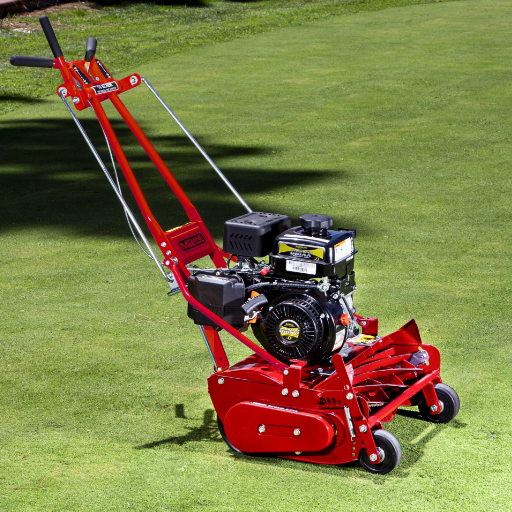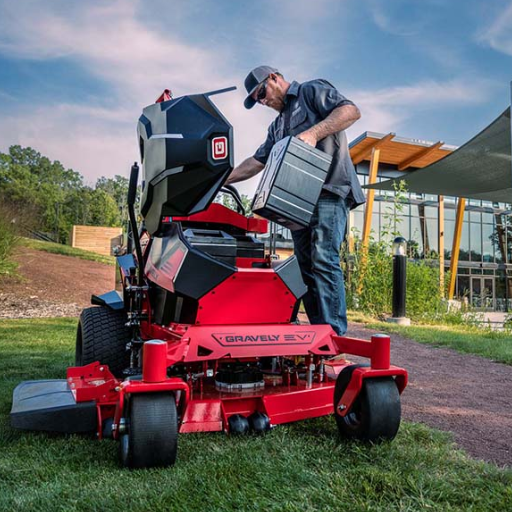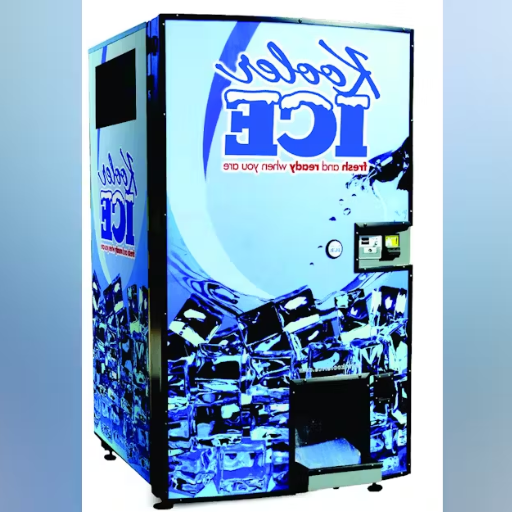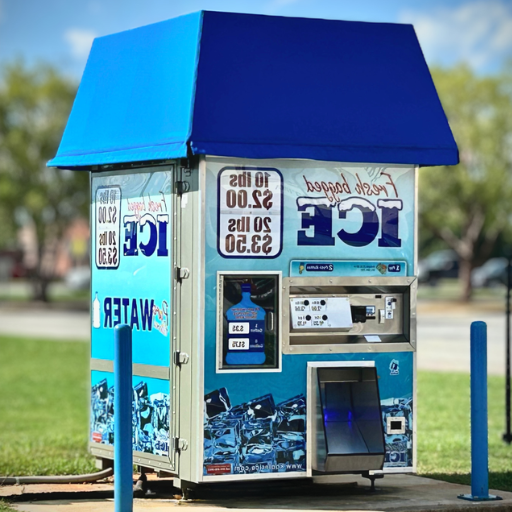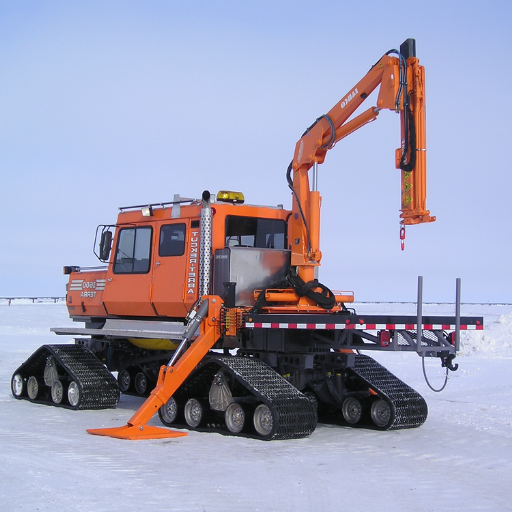To create a pristine lawn requires a good set of tools, and indeed, zero turn mowers are setting the trend this year as the ultimate lawn care tool emphasizing efficiency and precision. This guide will delve into the best zero turn mowers on offer this year, keeping homeowners with a dream for a flawless yard and landscapers looking for performance at the heart of the discussion. Equipped with advanced features and best-in-class maneuverability, these mowers are meant to reduce time while giving an apt finish to your lawn. Keep reading to find out our main recommendations, what those mowers can do, and how to pick the right one for yourself.
Introduction to Zero Turn Mowers
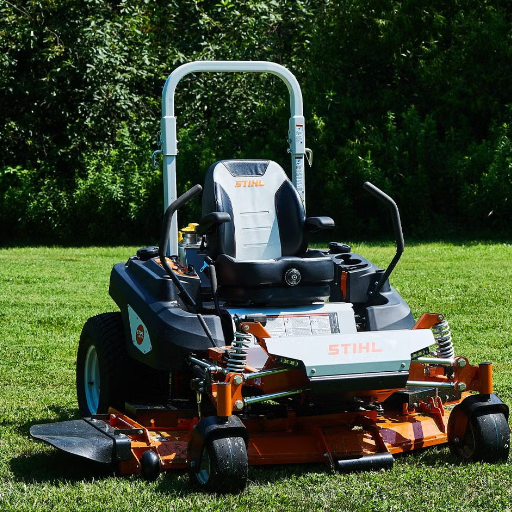
Zero turn mowers enhance lawn mowing by offering efficiency in cutting patterns. The mower for zero-radius turns received its name because that particular turning is impossible for most mowers, thus forcing them to maneuver around obstacles like trees and flower beds over distances. This zero turn mower might include a dual-hydrostatic drive system, controlled by levers, allowing for smooth and highly intuitive operation. Known for fast turning and accuracy, they suit both commercial and residential requirements where time-saving performance and immaculate results are in competition. With durability in mind coupled with various cutting deck sizes, the zero turn mower remains the number one choice that assures lawns worthy of top rank.
What is a Zero Turn Mower?
Deriving its name from a zero-degree turning radius inside its own footprint, a zero turn mower features a pair of drive wheels that operate independently and can rotate in opposite directions. The machine is steered with levers or lap bars, offering pinpoint steering and maneuverability that is impossible to match. With such a design, users can easily maneuver tight turns around obstacles such as trees, flower beds, or landscaping edges, thereby making the mower more efficient.
This mower is meant to excel in big mowing areas. Depending on size and demand, the majority of units have engines rated between 10 HP and 25 HP and up. Supplemental to this feature is their wide cutting deck width, ranging from 32 inches to 61 inches, allowing for covering more ground with fewer passes. Some very high-end models can even cut at about 8.5 mph with speeds maximizing productivity.
An average zero-turn mower is generally rentable in two categories: commercial and residential. Generally, smaller decks and engines characterize residential models so that smaller grounds stay attractive to them in terms of price. On the contrary, commercial zero-turn mowers are big and bulky, with frames designed to remain through years of abuse and heavy use in landscaping operations.
Benefits of Using a Zero Turn Mower
Zero turn mowers pair efficiency, accuracy, and convenience; hence, they are the prime ID for homeowners and professional landscapers. One noteworthy advantageous aspect is maneuverability: counsels with zero-degree turning radius; such mowers can bounce around any tight spaces or complicated landscapes. This makes the actual mowing time heralded less. Some reports even suggest that a zero turn seriously cuts time by as much as 50% following rates claimed by the conventional lawn tractor.
Moreover, zero turn mowers deliver a clean biodirectional cut. Their advanced deck design, perhaps with two or more blades, processes grass perfectly even at relatively higher speeds. With faster cutting, commercial models can hit 13 mph, just balancing out perfectly for performance with quality.
Speaking of fuel efficiency, commercial models usually have bigger tanks and engines sized for sustained use; hence, fuel efficiency saves money. Many modern zero turn mowers also incorporate hydrostatic transmissions and ergonomic controls to make things easier for the operator, especially when operating the unit for long periods. These three—the speed, precision, and comfort of operation—make zero turn mowers almost like power tools for any size of property maintenance.
Overview of the 2025 Market
The 2025 zero turn mower market will experience tremendous growth nurtured by advancements in technology and higher demand for efficient landscaping equipment. The industry is expected to grow at CAGR of 5 to 7% till the end of 2025, with population pressure due to urbanization and an increasing need for new gardening and lawn maintenance equipment.
One of the trends that stand out is implementing smart technology on zero turn mowers. GPS tracking, self-mowing capability, and real-time performance reporting are some features in demand from the innovations-seeking house and commercial user. On the other hand, sustainability remains a concern, drawing manufacturers to ramp up production of battery and electrical models as emissions-free alternatives.
In terms of regions, North America dominates the market due to a high number of commercial end users and large properties requiring fastidious care. However, much faster growth experienced in markets of Europe and Asia-Pacific can be attributed to increased adoption of landscaping equipment in both the developed and emerging economies.
Comparing price segments brings forth certain competitive trends. Thus, majority of sales are made through mid-range price products or premium price products. Consumers swear by products that maintain great durability, are fuel efficient, and require little in maintenance cost. Complemented by such features, state-of-the-art zero turn mowers are placed high among the select few of landscaping professionals and property owners in 2025.
Top-Rated Zero Turn Mowers for Residential Use
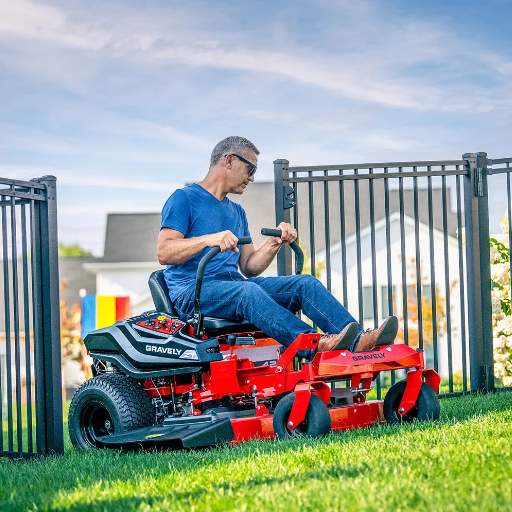
1. Husqvarna Z200 Series
Being considered reliable and easy to use, the Z200 Series manages to make an ideal compromise between price and performance. Equipped with a power engine, responsive controls, and comfortable seats, it is well suited for small-to-medium lawn-size jobs.
2. Cub Cadet Ultima ZT1 50
Famed for its robustness and immaculate cuts, the Ultima ZT1 50 is built upon a sturdy steel frame and engineered to advanced ergonomics. Its cutting deck guarantees consistent excellence in performance, hence the choice of a popular among residential mower.
3. John Deere Z330R
With premium comfort and user efficiency as the focal points, the Z330R rides smoothly and maneuvers superbly. With a solid build and flexible cutting options, it is a dependable choice for larger residential grounds.
Toro TimeCutter Overview
Toro TimeCutter Series is known for general use-shared qualities of durability, state-of-the-art technology, and user-friendly designs, making this particular range a well-regarded option for residential yard care. The Time-Cutter mower, powered by a solid engine, delivers more than enough power for mowing tough, demanding jobs. Another defining feature of this mower is the Smart Speed® system that gives the user three ranges of ground speed- Trim, Tow, and Mow-giving the user more control and precision as per the need of the task at hand.
Cutting deck sizes vary from model to model and 34 to 60 inches, from small to large sizes of yards. Constructed in heavy steel, the deck is the hallmark of longevity and great cuts. Many models consist of a Recycler® system to facilitate finer clippings that will nourish lawns naturally.
Comfort features in the TimeCutter include adjustable high-back seats, armrests, and easy-to-use interfaces, ensuring a smooth user experience during extended operation. Certain models possess MyRIDE® Suspension System that dampens vibrations altogether for added comfort in bumpy terrain. It carries up to 3 gallons of fuel and goes as fast as 7 mph to deliver speed and efficiency-the Toro TimeCutter. With such stellar features and engineering precision, producing a well-manicured lawn poses no challenge to the TimeCutter.
John Deere ZTrak Series
The John Deere ZTrak Series is very powerful and is one of the series of zero-turn mowers built to excel in performance and durability. Having a constructive mind for the residential and commercial users, the Series was divided into different models suitable for a variety of mowing needs. These mowers are designed to endure heavy and rigorous use across rough terrains with comfortable ergonomic controls, heavy-duty frames, and strong build quality.
From 42 to 60 inches in width, the high-capacity mowing decks of the ZTrak Series provide efficient cutting and uniform coverage, making it best suited for bigger lawns or properties. The Accel Deep™ and High-Capacity decks offered in selected models are specially designed to improve cut quality and enable faster mowing speeds. With engines ranging in the power from 20 to 25 hp, the ZTrak series also boasts impressive performance even in the toughest conditions.
Comfort is yet another attraction, featuring such newer improvements as premium seating and adjustable armrests, vibration-reduction technologies, and very accessible controls. Some units also have the ComfortGlide™ suspension system which increases the comfort of operators during long hours of use. With a forward drive of up to 9 mph and a large fuel tank capacity for selected models of up to 5.5 gallons, the John Deere ZTrak mowers enhance efficiency by decreasing the frequency of refueling and increasing the time possible for the user to cover ground. Furthermore, if you wish for advanced features, some ZTrak models are compatible with technologies such as the MulchControl™ Kit, which allows for quick transitions between mulching and side-discharge modes. Then commercial-grade transmissions and rear caster wheels allow better maneuvering even on uneven or sloped surfaces.
The ZTrak Series is a perfect example of a line that combines power with function and convenient features for the customer, thus making it a first choice for those who want precision and reliability in their lawn care equipment. Whether one has a large lawn or a commercial setup, the ZTrak Series offers machinery for high-level finish with minimal exertion.
Cub Cadet Ultima ZT1
The zenith Cub Cadet Ultima ZT1 is arguably a very high-performing center-mount mower, destined for precise operation of durability so it can cater to the need of homeowners having large lawns or difficult terrains. Powered by a large 23 HP Kawasaki FR691V twin-cylinder engine, this mowers ensures high level of power and consistency over the utmost mowing jobs. This amazing towing deck of AeroForce™ is second to none in cutting the grass and bagging it, thereby providing for utmost efficiency and performance.
Built for comfort and ease of use, the Ultima ZT1 has an ergonomic high-back adjustable seat with armrests and a padded lap bar about whose positioning can be adjusted to the operator’s comfort. The tubular steel frame construction provides immense strength and durability, thereby ensuring that the machine will endure through heavy long-term usage. Then there is a good smooth and responsive dual hydrostatic transmission for easy maneuvering around obstacles and mowing in tight spaces.
The cutting deck comes in various sizes: 42″, 50″, 54″, and 60″, which offer a lot of versatility when it comes to different property sizes and needs. Adjustable cutting heights are included in the mower and range from 1 to 4.5 inches, so users can maintain precision in their lawns’ appearance. Large rear tires, along with well-placed anti-scalp wheels, make sure that the Ultima ZT1 remains steady and gives a clean cut when faced with uneven terrain.
The Ultima ZT1 also features the QuickAttach™ deck system, where one can quickly unmount the deck in a matter of minutes, offering great convenience. This quality engineering combined with user-driven design makes the Cub Cadet Ultima ZT1 a competitive choice for anyone seeking efficiency, comfort, and durability in their outdoor maintenance equipment.
Key Features to Look For When Choosing the Right Mower
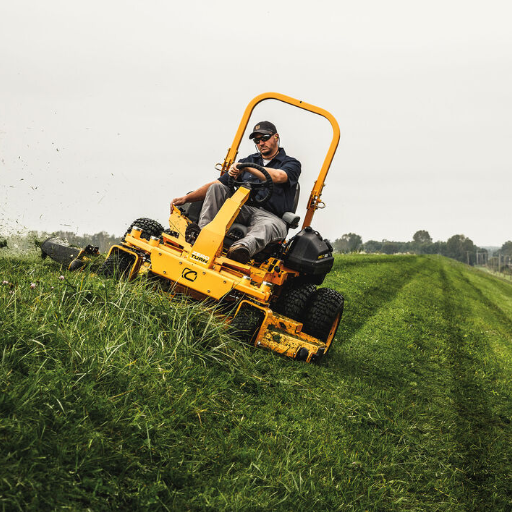
1. Cutting Performance
A mower with a real cutting deck and variable cutting heights is preferable so that one may do a perfect job in making an even cut across different types of grasses and conditions.
2. Ease of Use
Intuitive controls, comfortable seats, and easy maneuverability make mowing more efficient and less tiring.
3. Durability
A mower should be made up of good, strong, and durable materials capable of withstanding everyday use on varied terrains.
4. Maintenance
Choose mowers that have features like easy in-and-out servicing points or maybe removable decks, thereby saving a lot of time and effort.
5. Engine Power
Choose the one with enough engine power to maintain the performance without giving any problem about the size of your lawn and terrain.
6. Safety Features
Choose the mowers with built-in safety features such as automatic blade stops or firm protective guards.
Keeping these vital attributes in mind will point you to a mower that fits your requirements and enhances your lawn care experience.
Deck Size and Design
When deciding on a make of lawn mower, the choice of the deck size should weigh heavily on one’s mind, as it determines efficiency and suitability for various yard sizes. Usually, the mowers bearing bigger deck sizes from 42 inches to 60 inches would be perfectly fine for an immense lawn that would grant fewer passes in erecting its soft turf, thereby reducing the time for mowing. Conversely, smaller decks, such as 20 inches to 30 inches, work best for small yards or places with intricate landscape typified by tight spaces that require easy maneuvering.
The design of the deck is another important factor to consider. Preferably, the mowers should have durable materials such as the ones manufactured in reinforced steel to withstand the rigors and wear of time. Some features such as adjustable cutting heights and anti-scalp wheels can guarantee a precise cut without patches of unevenness or lawn damage. Among those that have great designs are modular decks, which can be disassembled or replaced easily for maintenance or cleaning purposes.
When deciding on the right deck size and design, let topography be your deciding factor. Hilly and uneven terrains call for self-propelled units operating floating decks that adjust according to ground-level changes, whereas lawns of flat and solid composition can maximize their best results from fixed deck mowers. A good combination of right deck size and efficient design spells out a far smoother mowing run crafted towards your needs.
Engine Power and Performance
The engine is the lifeblood of any lawn mower, and its power is always directly linked with performance and efficiency. Thus dimensions of engines are very often referred to by their displacement in cubic centimeters (cc) or horsepower (HP). For residential-type lawns, usually, the sufficient range for engines is between 140cc and 190cc; they provide enough torque for grass cutting purposes. Engines with powers greater than 200cc are intended for big properties, uneven terrain or thick undergrowth.
There are two main types of engines: two-stroke and four-stroke. The two-stroke engines, being very light, produce quite a bit of power in a short period of time, so they are more suited to agility tasks. However, four-stroke engine options tend to be favored on lawn mowers due to fuel economy, quiet operation, and reduced emissions. Some of the modern machines use OHV technology, which makes them more durable and powerful but uses less fuel.
For almost any level of power, variable speed drives or automatic choke systems are manufactured for extremely smooth operation. Developments, further, in fuel injection systems, help in giving a more accurate fuel/air mixture to improve engine response and reduce fuel consumption. One must consider lawn size, surface condition, and how often one intends to cut, so that these factors help in deciding the right balance of power and performance that will cater to his or her needs.
Comfort and Usability Features
The modern lawn mower maker puts the emphasis on operator comfort and ease of use so that managing the yard is more convenient and enjoyable for the operator. A large part of ergonomic handle design is that they are adjustable to different user heights to help avoid straining the body over long use. In recent years, there has been an improvement in manufactures providing padded or vibration-dampening handles, which allow the operator to be less tired after mowing very big yards or bumpy terrains.
The best self-propelled systems assemble in various configurations with variable speed controls to accommodate the user’s walking pace for variable walking speeds, having the extra advantage of really helping the operator steer through corners and slopes. For push mowers, lightweight materials such as reinforced aluminum or composite plastics are used to make them easier to handle and yet durable.
Probably the most important advancement is the incorporation of user-friendly controls and automation attributes. Electric start systems, for instance, have replaced the conventional pull-start feature that require very little effort to ignite. Some others are even connected to smartphones another way for users to monitor maintenance schedules, track performance, and adjust the settings to their liking.
Another concern is noise reduction, so manufacturers are trying to come up with quieter designs for engines and better mufflers-a consideration worthy of note in urban or suburban neighborhoods where noise laws might apply, making for a far more practical and considerate mowing experience.
Research on grass collection systems has produced innovations such as bigger bags that detach easily, compared to regular ones, and mulching features that chop grass clippings finely, thus allowing them to be deposited on the lawn as a fertilizer. This provides for the flexible and efficient management of yard debris in accordance with varying preferences. Together, these enhancements improve the contemporary lawn mower’s ease of use and comfort, making it an applicative and simple device that can cater to practical needs.-
Pros and Cons of Popular Zero Turn Mowers
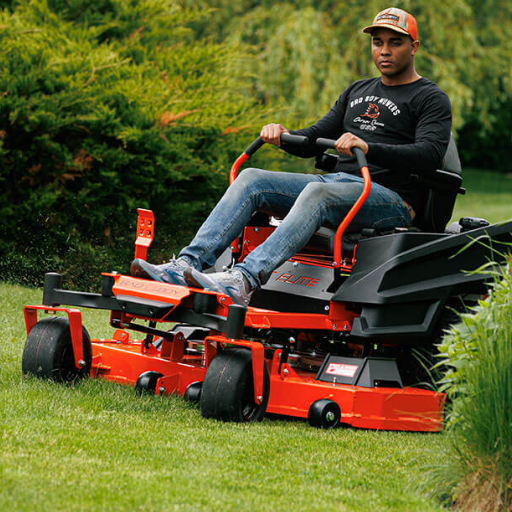
Pros:
- Superior Maneuverability: Zero turn mowers excel in navigating tight spaces and intricate landscaping, making them ideal for lawns with obstacles such as trees and flower beds.
- Time Efficiency: With their high-speed capabilities and precise turning radius, they significantly reduce mowing time compared to traditional models.
- Professional-Quality Cuts: These mowers deliver even and clean cuts, enhancing the overall appearance of the lawn.
- Comfort Features: Many models include ergonomic seating, vibration dampening, and intuitive controls to improve user comfort during extended use.
Cons:
- Higher Cost: Zero turn mowers often come with a higher initial investment compared to standard riding mowers.
- Limited Stability on Slopes: These mowers are less effective on steep inclines, which may affect performance and safety in uneven terrains.
- Learning Curve: First-time users may require some adjustment to master their unique steering method.
- Maintenance Needs: The advanced design and components may require more frequent upkeep and servicing.
Toro TimeCutter: Advantages and Disadvantages
The Toro TimeCutter offers excellent maneuverability, robust build, and comfort but lacks an hour meter, has no storage, and may trap grass.
|
Aspect |
Advantage |
Disadvantage |
|---|---|---|
|
Maneuvering |
Easy to navigate |
None noted |
|
Build |
Robust design |
Grass traps |
|
Comfort |
Smooth ride |
No storage |
|
Features |
Reliable engine |
No hour meter |
|
Deck |
Durable |
Rust risk |
John Deere ZTrak: What You Need to Know
When it comes to John Deere ZTrak, I have found it to be a reliable and efficient zero-turn mower, especially for large areas. Its sturdy build and powerful engines ensure smooth performance even on uneven terrains. ZTrak is better known for comfort-oriented features such as adjustable seating and controls set up to be capable during long sessions of mowing. Now, with keeping it in mind, one must run regular maintenance to keep it working on the best of its ability; the best materials are used in its construction, which obviously makes its price higher than a very basic model. Greatly recommended if durability and good performance are what you intend to go with.
Cub Cadet Ultima: Strengths and Weaknesses
The Cub Cadet Ultima offers a strong build, comfortable ride, and excellent cutting performance, but has occasional starting issues and assembly challenges.
|
Aspect |
Strength |
Weakness |
|---|---|---|
|
Build |
Durable frame |
None noted |
|
Comfort |
Smooth ride |
None noted |
|
Cutting |
Best-in-class |
None noted |
|
Operation |
Easy to use |
Starting issues |
|
Assembly |
Simple |
Minor issues |
Maintenance Tips for Zero Turn Mowers
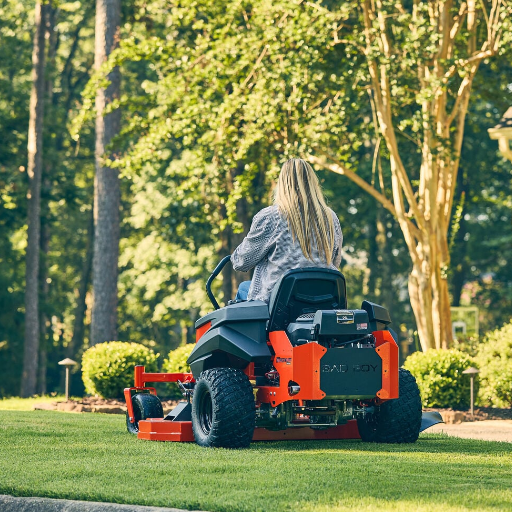
Maintenance tips for zero-turn mowers include cleaning the deck, changing oil, sharpening blades, checking belts, and following the manufacturer’s schedule.
|
Aspect |
Tip |
Frequency |
|---|---|---|
|
Deck |
Clean regularly |
After use |
|
Oil |
Change oil |
Per schedule |
|
Blades |
Sharpen/replace |
As needed |
|
Belts |
Check/adjust |
Regularly |
|
Filters |
Replace |
Per schedule |
|
Grease |
Lubricate points |
Regularly |
|
Spark Plug |
Inspect/replace |
Annually |
Routine Maintenance Checklist
To keep your zero-turn mower operating at top performance, regular maintenance is essential. Below is a comprehensive checklist to help you maintain your mower and ensure longevity:
- Inspect and Replace Air Filters
- Dirty air filters reduce engine efficiency. Check the air filter every 25 operating hours and clean or replace it as needed. A clogged filter can significantly decrease performance and fuel efficiency.
- Change Engine Oil and Filter
- For optimal engine health, change the oil and replace the filter after the first 5-10 hours of usage for a new mower. Following this, perform oil changes every 50 hours of operation. Always use the oil type recommended by the manufacturer.
- Sharpen the Blades
- Dull blades tear grass rather than cutting it cleanly, leading to unhealthy lawns. Blades should be inspected, sharpened, or replaced every 20-25 operating hours or as required.
- Check Tire Pressure
- Uneven tire pressure can cause uneven cuts and affect the mower’s handling. Regularly verify pressure levels and maintain them according to the manufacturer’s guidelines.
- Clean the Deck
- Grass buildup under the mower deck can lead to uneven cutting and reduce efficiency. Clean the deck after each use to prevent rust and maintain proper airflow.
- Inspect the Belt and Pulleys
- Check the drive belts for wear, cracks, or fraying. Replace damaged belts immediately to prevent unexpected downtime. Ensure pulleys are free from debris and rotate smoothly.
- Grease Moving Parts
- Lubricate all grease fittings and moving parts every 25 hours to reduce wear and tear. This step is crucial for extending the lifespan of critical components.
- Check Fuel System
- Examine the fuel filters and replace them as needed. Use stabilized fuel during storage to prevent engine problems caused by stale gasoline.
- Battery Maintenance
- Keep the battery terminals clean and ensure the connections are secure. For long-term storage, disconnect the battery to preserve its lifespan.
- Inspect Safety Features
- Ensure all safety switches and controls, such as the parking brake and blade engagement mechanisms, are functioning correctly for safe operation.
- Inspect Engine Cooling System
- For liquid-cooled engines, monitor coolant levels and check for any leaks. Clean the cooling fins regularly to prevent overheating.
- Follow Seasonal Maintenance
- At the end of each mowing season, drain the fuel tank or add a fuel stabilizer, thoroughly clean the mower, and store it in a dry, covered area.
By diligently following this routine maintenance checklist, your zero-turn mower will continue to deliver high performance and remain reliable for years to come. A well-maintained mower not only extends its lifespan but also ensures a more precise and efficient cut every time.
Common Repairs and Troubleshooting
Even with routine maintenance, zero-turn mowers may occasionally require repairs or adjustments. Below are some of the most common issues owners encounter and their practical solutions:
- Starter or Engine Won’t Turn On
If the engine fails to start, first check the battery for proper charge and ensure the power cables are securely connected. A weak or dead battery is often the culprit. Test the voltage using a multimeter—readings below 12.6 volts may indicate a need for charging or replacement. Additionally, inspect the spark plug for dirt or wear, cleaning or replacing it as necessary.
- Uneven Cuts
Uneven cuts are commonly caused by dull or damaged blades. Remove the blades and sharpen them to restore their performance. Check for bent blades and replace them if necessary. Furthermore, ensure the deck is level by measuring the blade height on each side and adjusting the deck hangers accordingly.
- Mower Fails to Move Properly
Hydraulic drive systems can occasionally have issues. If the mower struggles to move or the speed is inconsistent, inspect the hydraulic fluid levels and top them off if needed. Be sure to use manufacturer-recommended fluid types. Low fluid levels or air in the system can lead to reduced performance. If the problem persists, a professional may need to inspect the hydraulic pumps or motors.
- Excessive Vibration During Operation
Excessive vibration often indicates loose or worn components. Inspect the mower deck for loose bolts or fittings and tighten them to eliminate the problem. Additionally, check the spindle assemblies and pulleys for signs of wear or misalignment.
- Fuel System Problems
If your mower stalls frequently or runs rough, examine the fuel line for blockages or leaks. Replace clogged fuel filters and clean out any debris in the fuel tank. Ethanol-blended fuels can cause moisture buildup, so using a fuel stabilizer in conjunction with fresh fuel is recommended to reduce issues.
- Belt Breakage or Wear
Worn or broken belts can cause performance issues, such as the mower failing to cut or move properly. Inspect belts for cracks, frays, or signs of wear, and replace them promptly. Regular cleaning of debris from pulleys and belt paths can prolong the lifespan of belts.
By identifying these common problems early and addressing them with proper repairs, you can keep your zero-turn mower operating efficiently and extend its lifespan. Regular inspections and timely fixes will also prevent small issues from escalating into costlier repairs. For advanced troubleshooting or repairs beyond basic adjustments, consulting a professional technician may be necessary.
Seasonal Care for Longevity
Proper seasonal care is the must to maintain efficiency and the very life of your zero-turn mower. Once the mower is prepared for the changing season, it will operate to its fullest potential and spare itself from unnecessary wear and tear. The following are seasonal care considerations:
Preparing for Spring
Spring arrives with the best time to inspect, very thoroughly, the mower after its winter storage. Begin by checking the engine oil level and replacing it if necessary. Also, check if the air filter is dirty or clogged and replace it accordingly. Sharpen blades. A blunt mower blade will scar the grass and put unnecessary strain on the engine. Check the charging level of the battery and clean the terminals if any corrosion exists. Make sure that the tires are inflated to increase suction and prevent uneven cutting.
Summer Maintenance
During mowing season, your zero-turn mower goes through hell and back, and life is wheel daily. Clean it under cuffbags to dislodge clippings and matters that block airflow and interfere with working performance. Regular lubrication is important for all moving parts lest it eventually becomes so rusty or hard to roll smoothly. Keep an eye on belt condition, as the heat and constant use sometimes lead to cracking or fraying. Check your fuel often, ensuring the freshness of the said fuel so as to avoid engine build-ups and inefficiency.
Fall Care
Fall is also the best period for ensuring that your mower is ready for the minimal use or storage it is about to undergo. Before storing the machine, empty the fuel tank or add a fuel stabilizer to avoid old fuel corrosion in the engine parts. Remove your spark plug and check for wear; replace it if needed. Thoroughly clean off any dirt or grass residue to avert damage during storage. Cover your mower with a water-resistant cover and put it away in a cool, dry place.
Winter Storage
If you reside in a generally cold region during the winter period, you might want to ensure that you take the coveted steps to store your mower for winter. Completely drain the mower of oil and fuel to prevent freezing or thickening inside the unit, which could cause damage to those internal components. You may want to grease the fittings and cables to prevent corrosion. Keep the battery indoors from cold temperatures that lead to capacity loss by taking it out of the mower; check on the stored equipment regularly to keep it in excellent working condition.
This way, employing seasonal care, efficient operation is guaranteed for your zero-turn mower, with the possibility of extending its skillful intervention for many years coming down the road. Time and again, maintenance on a proactive basis is all you need to keep away expensive repairs while keeping the lawn immaculate.
Reference Sources
-
Rotary Mowers Safety: Lawn Care Training Guide
This guide discusses the safety and usage of rotary mowers, providing insights into their operation and impact.
Read more here -
Mowing and Light-weight Rolling of Creeping Bentgrass Putting Greens
This research focuses on mowing techniques and their effects on bentgrass greens, which could provide insights into mower performance.
Read more here -
CWRU Cutter: Design and Control of an Autonomous Lawn Mowing Robot
This thesis explores the design and control of autonomous mowers, offering a technical perspective on mower innovation.
Read more here
Frequently Asked Questions (FAQs)
What is the best zero-turn mower for residential areas?
The best zero-turn mower for residential areas often depends on the size of your lawn. For smaller properties up to 1 acre, models like the Cub Cadet Ultima ZT1 are popular due to their maneuverability and efficiency. For larger lawns, the Ariens and Toro TimeCutter series provide robust options with commercial-grade engines that can handle more demanding tasks.
How do I choose the right zero-turn riding mower?
Choosing the right zero-turn riding mower involves considering factors like the size of your lawn, the type of engine, and the deck size. For example, if you have 2 acres to mow, a mower with a 54-inch deck and a Kawasaki engine would be ideal for efficient cutting. It’s also important to test the mower to get a feel for its handling and comfort.
What are the advantages of a commercial-grade zero-turn mower?
Commercial-grade zero-turn mowers are built to last and designed for heavy use. They often feature welded decks, powerful engines, and enhanced durability compared to consumer-grade models. This makes them suitable for professional landscapers or homeowners who want a mower that can handle tough conditions and large areas without breaking the bank.
Can electric zero-turn mowers perform as well as gas models?
Electric zero-turn mowers are becoming increasingly popular due to their quiet operation and lower emissions. While some models like the Hustler and Stihl electric mowers offer comparable performance to gas models, factors such as battery life and charging time may influence their effectiveness for larger properties beyond 2 acres.
What should I look for in a zero-turn mower deck?
When selecting a zero-turn mower deck, consider the material and design. Fabricated decks are generally more durable and provide better cutting performance than stamped decks. Additionally, a 7-gauge steel deck can withstand the rigors of mowing, while features like reinforced edges can help prevent damage from obstacles.
Are there entry-level zero-turn mowers available?
Yes, there are entry-level zero-turn mowers designed for homeowners who may not need commercial-grade features. Brands like Cub Cadet and Toro offer models that are user-friendly and affordable, making them ideal for those with smaller lawns or those just starting with lawn care.
How does a zero-turn mower compare to a traditional riding lawn mower?
Zero-turn mowers offer superior maneuverability and speed compared to traditional riding lawn mowers. With their unique steering system, often with levers instead of a steering wheel, they can turn on a dime, making them ideal for navigating tight spaces and landscaping features. This can significantly reduce mowing time, especially in complex lawns.
What are the best features of the Cub Cadet Ultima ZT1?
The Cub Cadet Ultima ZT1 stands out with its sturdy construction, powerful Kohler engine, and a comfortable seat for extended mowing sessions. Its 54-inch fabricated deck provides excellent cutting performance, and its ease of use makes it a favorite among homeowners looking for an efficient mowing solution.
How do zero-turn mowers handle clippings and leaves?
Zero-turn mowers are designed to efficiently cut and distribute clippings and leaves. Many models come with mulching capabilities, which can help break down leaves and clippings, allowing them to decompose and nourish your lawn. Features like high-lift blades can also enhance the mower’s ability to handle dense grass and leaves effectively.



